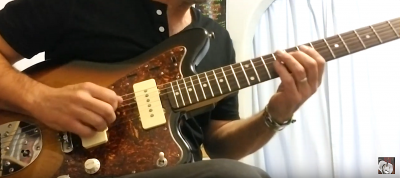What Does Recording A Dry Signal Mean? |
|
 |
Replies
(1 - 9)
|
|
|
|
| Feb 9 2015, 12:24 AM |
|
so i was talking to a audio guy asking what would be the best way to run a hd pod x into my daw, asked if it would be best to use the usb of the line 6 or go into my interface. He asked what interface and daw i use and he told me the set up he uses is very similar to mine and that he goes into the XLR, and the spidf for recording a dry signal, and using your pod into spidf the best way for recording so you can reamp. so im lost cause i dont know what recording a dry signal means, i kind of think i know what reamping means. but not really clear on either of it. thought i would strat a discussion for some help on this subject Recording dry signal means that you are going straight from guitar to your audio recording interface and recording guitar as it sounds by itself (sound coming out of the jack on the guitar). No amp, no effects - just the guitar clean signal. The benefit of this is that once you have this "dry" guitar signal, you can get it out of the computer, make it go through POD or guitar amplifier and record the new track which would be referred to as "Wet" (it has guitar+amp+cab+any effects used). This gives you more versatility in the mixing phase as now you don't need to physically re-play and re-record any tracks in case you for example want to try a different crunch guitar tone. This is a bit of "modern" thing to do as recording dry allows you to tweak and decide on your final guitar tone later on when mixing the songs. Downside of it is that it is so hard to decide on the "final" tone when you have this much versatility on your hands -------------------- For GMC support please email support (at) guitarmasterclass.net
Check out my lessons and my instructor board. Check out my beginner guitar lessons course! ; Take a bass course now! |
|
|
||
|
|
|
|
| Feb 9 2015, 05:35 PM |
|
This is a bit of "modern" thing to do as recording dry allows you to tweak and decide on your final guitar tone later on when mixing the songs. Downside of it is that it is so hard to decide on the "final" tone when you have this much versatility on your hands +1 to all of the above but recording a 'dry' signal (along with amp'd, effected, etc.) has been common since the late 60s. Same with re-amping. Before amp software (and still today) you'd re-amp through another actual amp via a reverse DI ... http://en.wikipedia.org/wiki/Re-amp Dedicated re-amp DIs became commercially available in the mid 90s. Before that the engineer would tweak the output of a channel strip or reverse build a stock DI (convert balanced to unbalanced, ground reverse, etc.). This post has been edited by klasaine: Feb 10 2015, 12:46 AM -------------------- - Ken Lasaine
https://soundcloud.com/klasaine2/foolin-the-clouds https://soundcloud.com/klasaine2/surfin-at-the-country-hop Soundcloud assorted ... https://soundcloud.com/klasaine3 New record ... http://www.cdbaby.com/cd/kenlasaine Solo Guitar ... https://www.youtube.com/playlist?list=PLXZh...5iIdO2tpgtj25Ke Stuff I'm on ... https://www.youtube.com/playlist?list=PLXZh...b-dhb-4B0KgRY-d |
|
|
||
1 User(s) are reading this topic (1 Guests and 0 Anonymous Users)
0 Members:

























